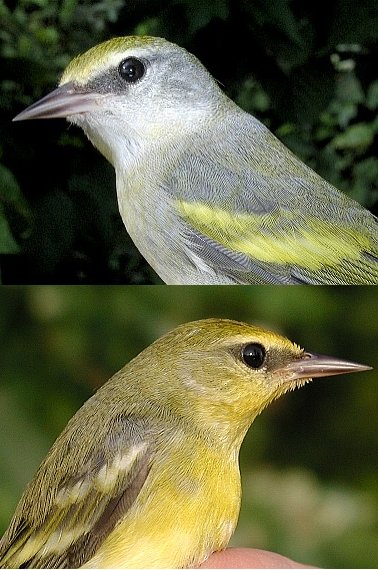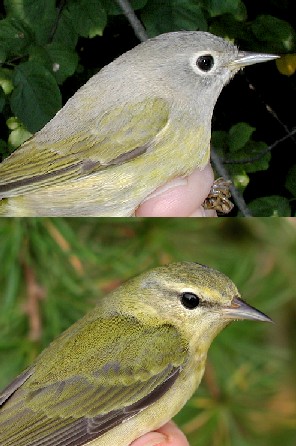PICTORIAL HIGHLIGHTS, WEEK
OF 8/22/01-8/27/01
Hybrid "Brewster's"
Warblers resulting from various crosses and
backcrosses between Golden-winged
and Blue-winged
warblers, can be highly variable in appearance. The immature female
Brewster's
banded last week (top photo) more closely resembled the Golden-wing
parental type (but without the dark throat), while the one banded this
week (bottom photo) closely approached the Blue-wing
type (but with incompletely yellow underparts and partially yellow wingbars).

As indicated in the table above,
we banded our first Nashville
(top photo; note the prominent eye ring) and Tennessee
(bottom
photo; note the prominent eye line) warblers this week. Like
the Brewester's Warblers
above, both these species are in the genus Vermivora.
Compared to most other wood warblers, Vermivora
species are characterized by small size (i.e., body mass), relatively short
tails and very sharply pointed beaks. Bird banders who handle Vermivora
spp. may have noticed that these species,
like orioles, can use their beaks in a reverse opening fashion, to pry
apart two fingers lightly trying to hold the birds' bills shut. This
ability reflects an adaptation to the foraging ecology of many species
in this genus, which includes the habit of probing and prying into buds,
flowers, and tightly curled leaves to gain access to small insects and
nectar.

<HOME
Go to Past
Pictorial Highlights


